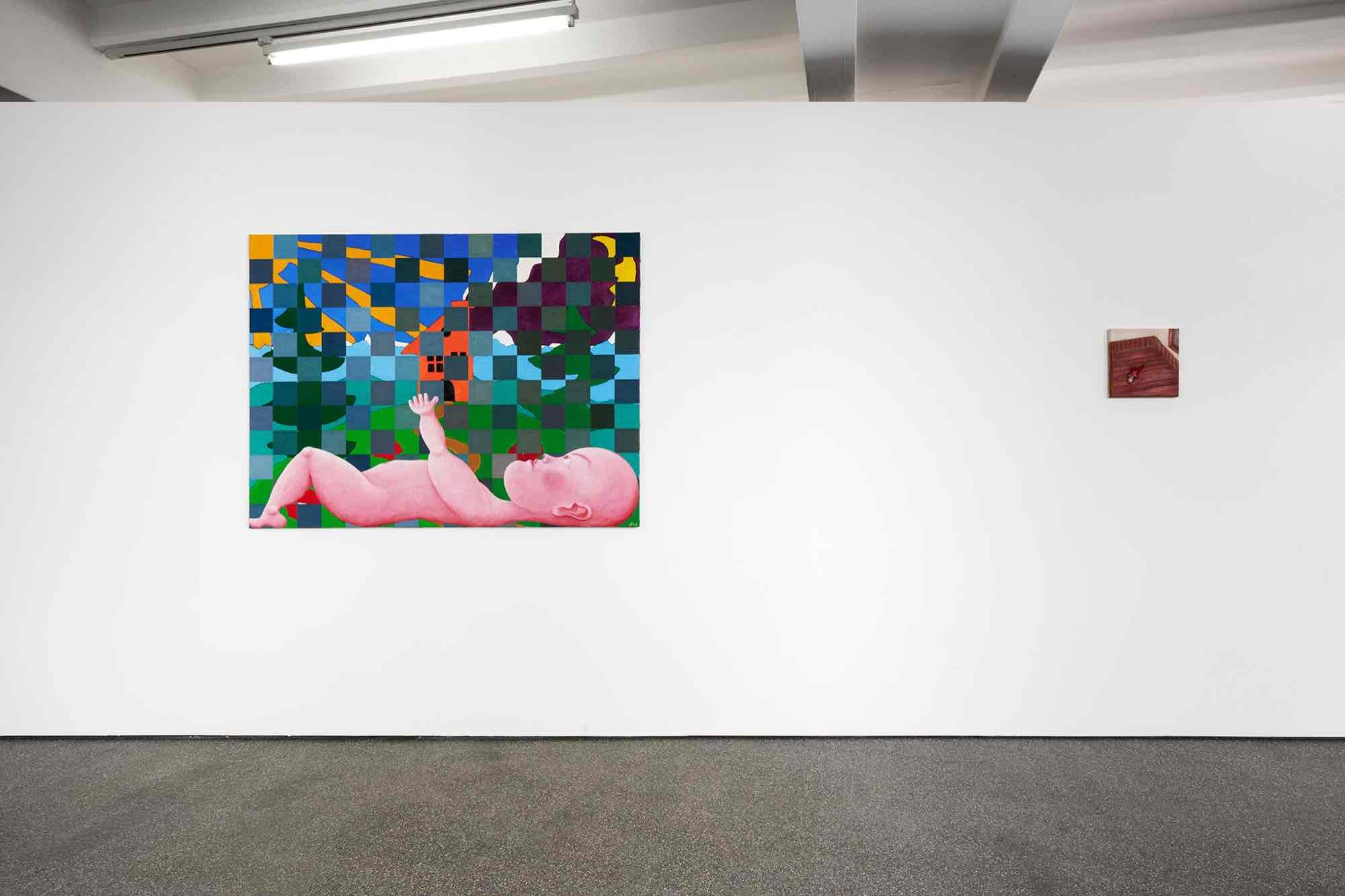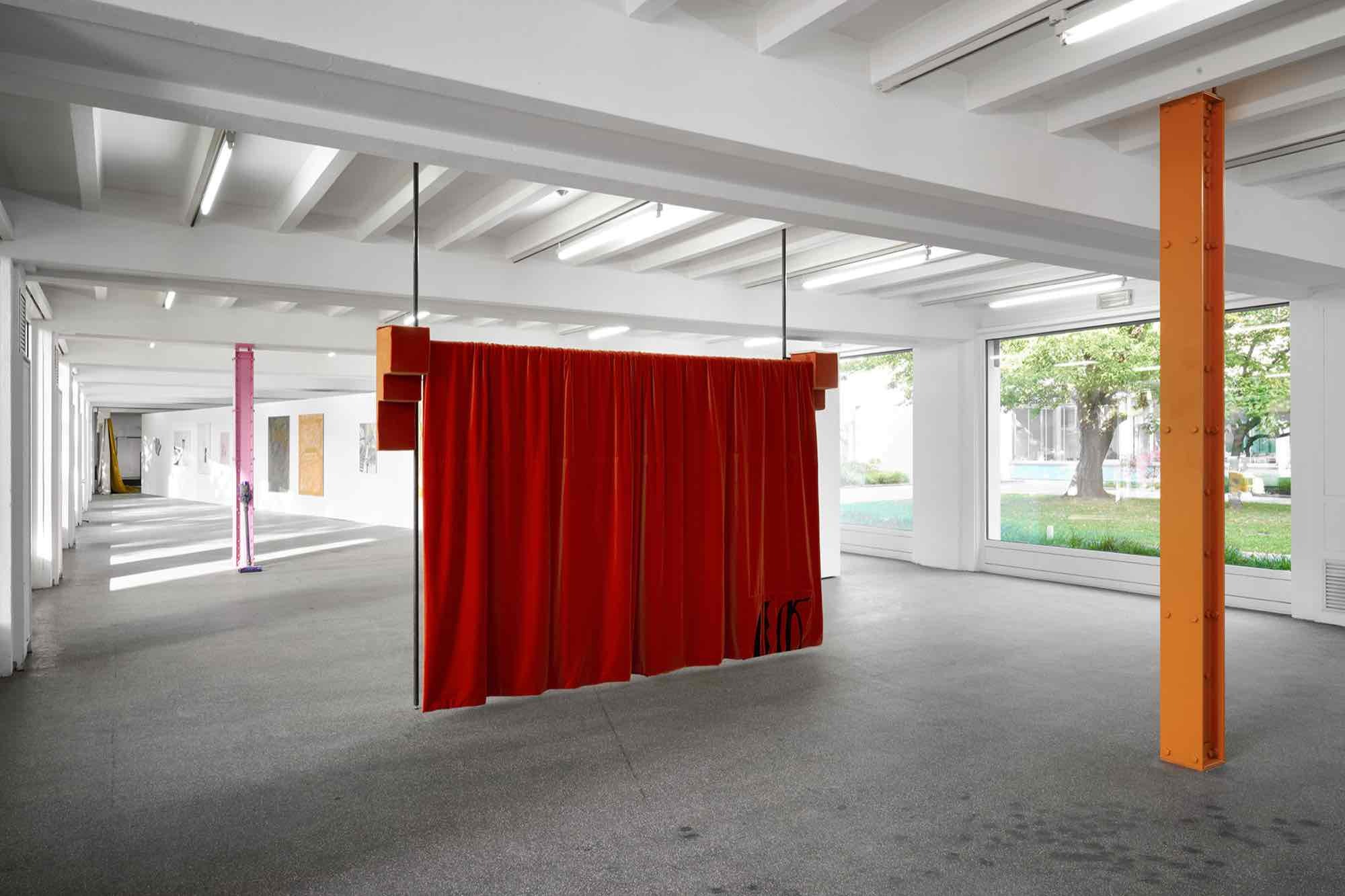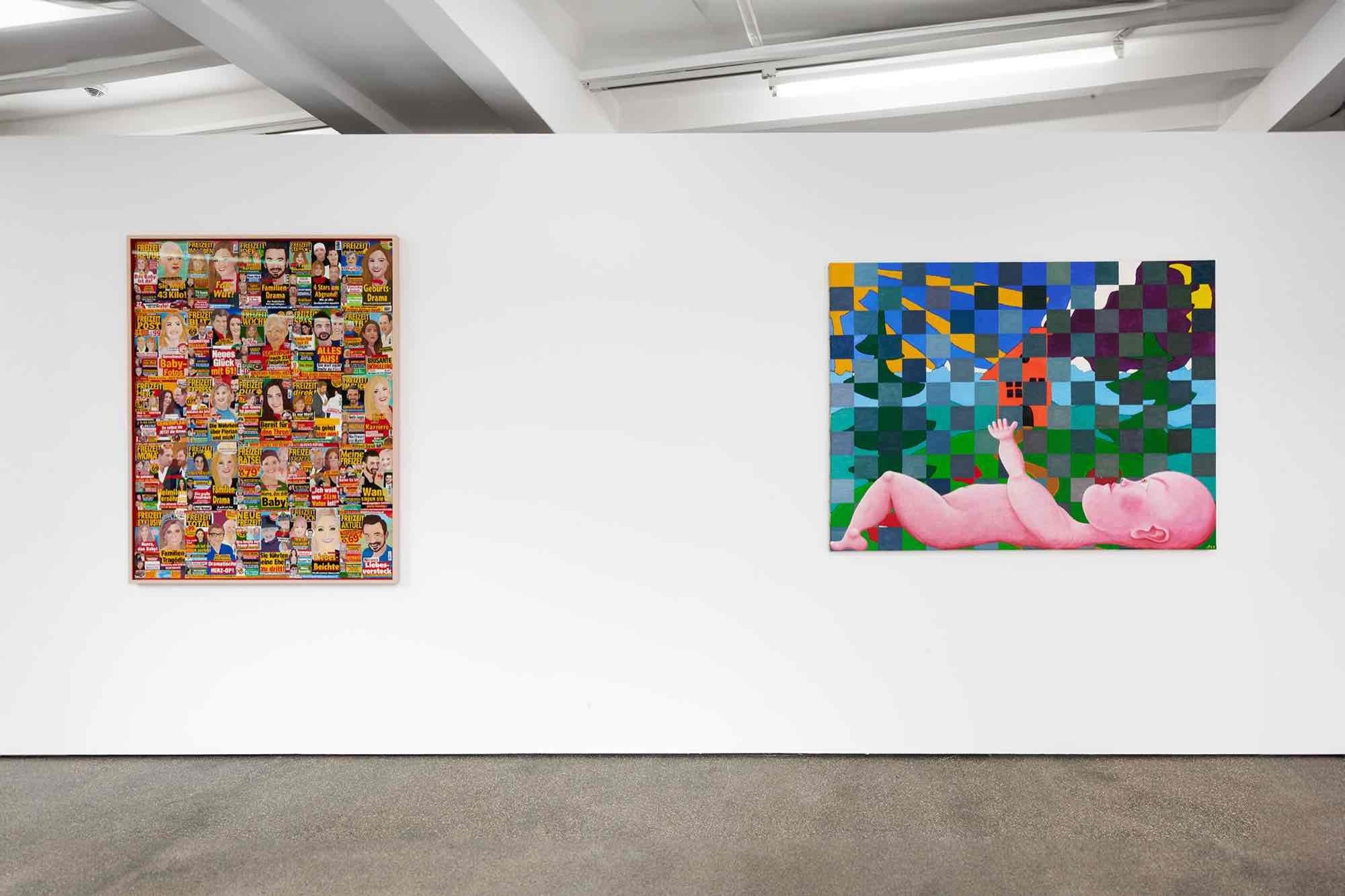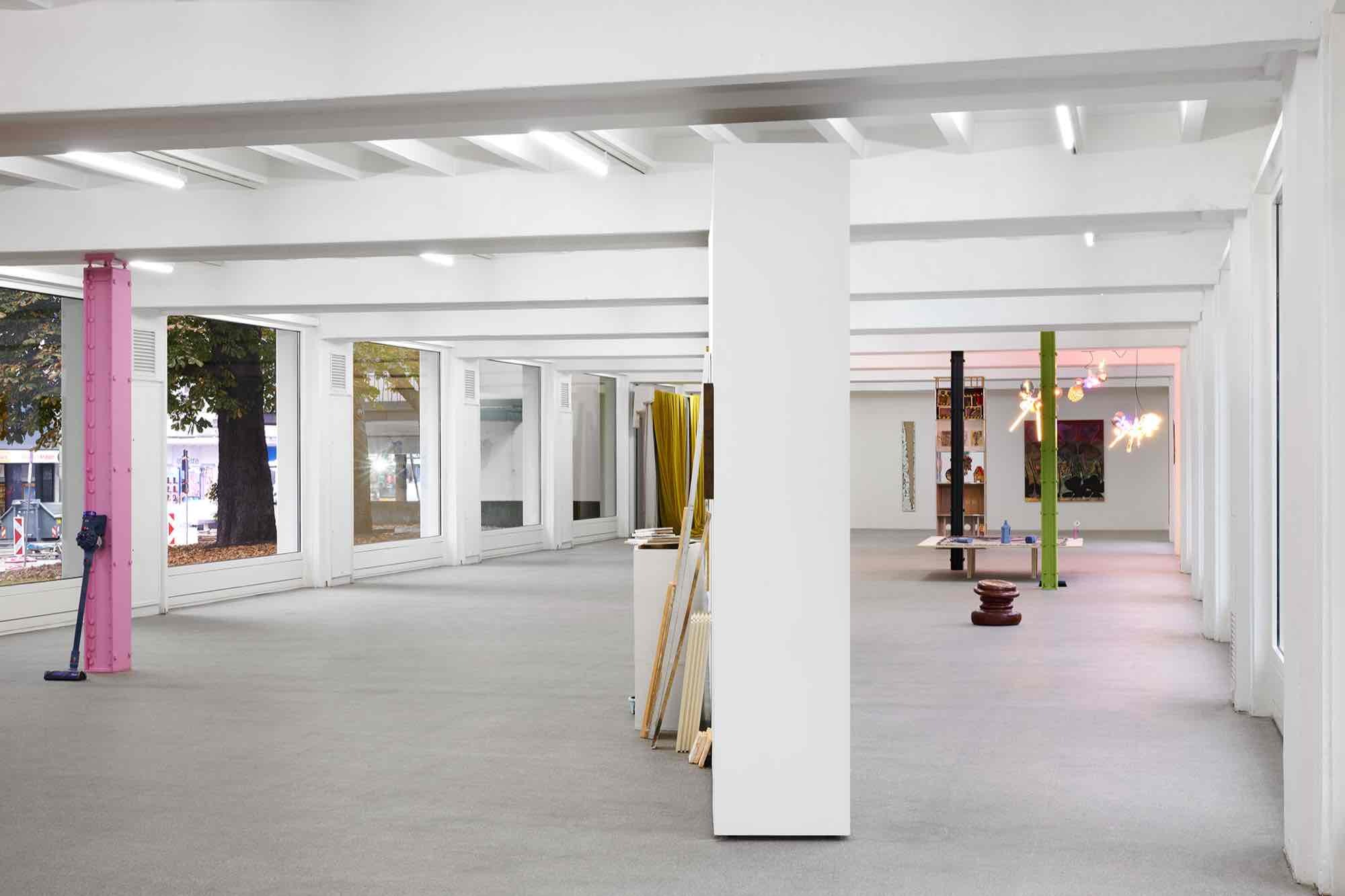Welcoming of the Space
29 Sep - 19 Nov 2023










Welcoming of the Space
With Marie Angeletti, Monika Baer, BLESS, Vittorio Brodmann, Jakob Buchner, Milena Büsch, Merlin Carpenter, Hamishi Farah, Fischli Weiss, Hansi Fuchs, Sophie Gogl, Matthias Groebel, Jacqueline Humphries, Dozie Kanu, Nora Kapfer, Morag Keil, Emil Michael Klein, Maggie Lee, Lorenza Longhi, Alan Michael, Kaspar Müller, Vera Palme, Gunter Reski, Jean-Frédéric Schnyder, Dennis Scholl, Nolan Simon, Lucie Stahl, Megan Francis Sullivan, Alfred d’Ursel, Amelie von Wulffen, Jie Xu, Barbara Zenner, Damon Zucconi
Where I come from, “hoi” is what people say when they greet each other in the street. I’ve come to Cologne because I love painting, and can think of no better place to engage seriously with this medium. That’s why I’m welcoming my first exhibition here with an overview of the current state of one of visual art’s oldest genres. Painting is especially exciting right now, and this has nothing to do with my own passion for it; it is rather that a lot of people are painting again and that art’s questions are again up for negotation. This doesn’t mean that it’s going to be easy for painting to find its way forward. Its own history casts a long shadow over its current flowering like an implacable judgement. However, its difficulties lie not so much behind as ahead of it. Since painting develops slowly, it needs to be able to imagine an enduring future, one where it can eventually hope to arrive by creeping along at its own modest pace.
Right now, it is not just that the future is clouded over – it has become hard to imagine at all. Are people painting in the hope that the future, currently hidden behind a fog of dystopias and disaster scenarios, will eventually reappear? To keep on painting while everything familiar seems to be crumbling around you could be seen as an expression of the “principle of hope,” a way of resisting a world that has embraced darkness through the determination to see a light at the end of the tunnel. In this case, painting would be a way of going against the grain, of rising above social conventions with a wan smile.
Hoi Köln brings together a subjective overview of artists who have continued to paint under these transformed conditions. It is an intergenerational meeting. Many of those represented here have been committed painters for decades, and lived through several of the medium’s ebbs and flows. They were painting when painting was being decried, and they are still painting now that it has no need for a legitimating discourse. In the meantime, many have joined them. However, the exhibition also includes many younger artists, who have grown up in a digitalised world, and who, despite all the possibilities offered by technology, have decided to work in the analogue form that is painting.
Hoi Köln is a plea for painting in its broadest sense, to engage with the media, subjects and codes of contemporary art. In recent years there have been growing demands for art to take up the urgent themes of its time and fall into place with the world’s realities. By contrast, the artists in Hoi Köln make a different claim for art: art, conceived as an activity that serves a function, doesn’t have to do anything. This does not mean they are proposing an art that derives from the monadic realm of fantasy and dream, still less one that longs to retreat into purely personal and individual quirks. Rather, most of the approaches in the exhibition are concerned with striking a balance between reference to the external world and art’s own selfreflective order.
Hoi Köln will be divided into three episodes. In the first, the Kunstverein’s main hall, with its huge glass windows, is introduced to the medium least suited to it, namely painting. In order to create a more relaxed atmosphere for this meeting, several of its guests have brought items of furniture to it. These temporary furnishings aim to ease the transition.
The second episode, In the Belly of the Machine, which opens on 1 December, will show the exhibition in a new light. Some works from the first part will remain, new ones will be added, and others will take their leave. In the Belly of the Machine brings together paintings that in various ways digest the technological changes brought about by digitalisation.
The last part of the trilogy, which opens on 2 February 2024, addresses the Nightmare of Painting. Here viewers are led into spaces behind spaces. In the light of its historical burden and Nietzsche’s uncanny concept of eternal return, painting can become a nightmare. This is not meant in the Romantic sense of the term. It is a fine line.
Curated by Valérie Knoll
